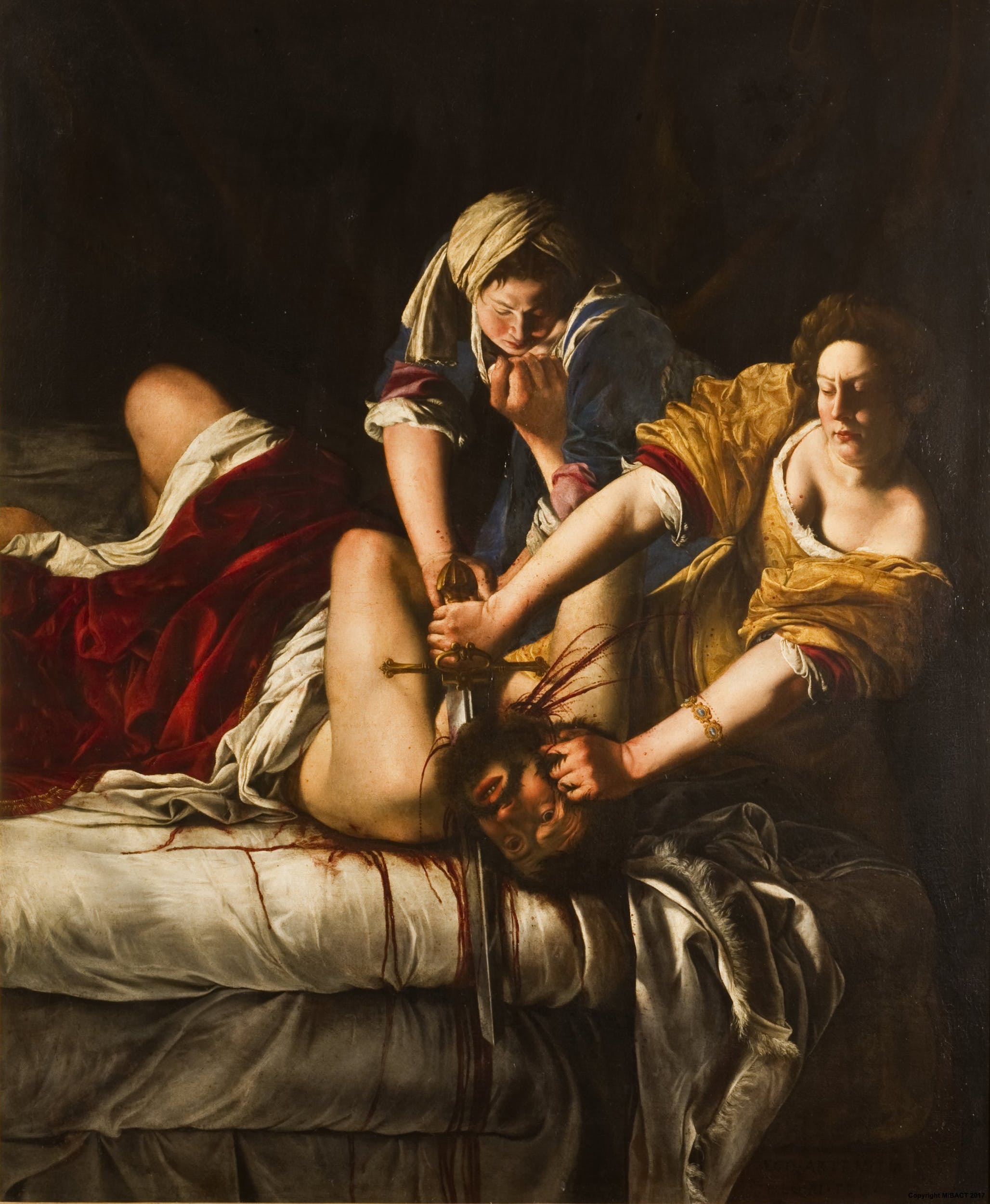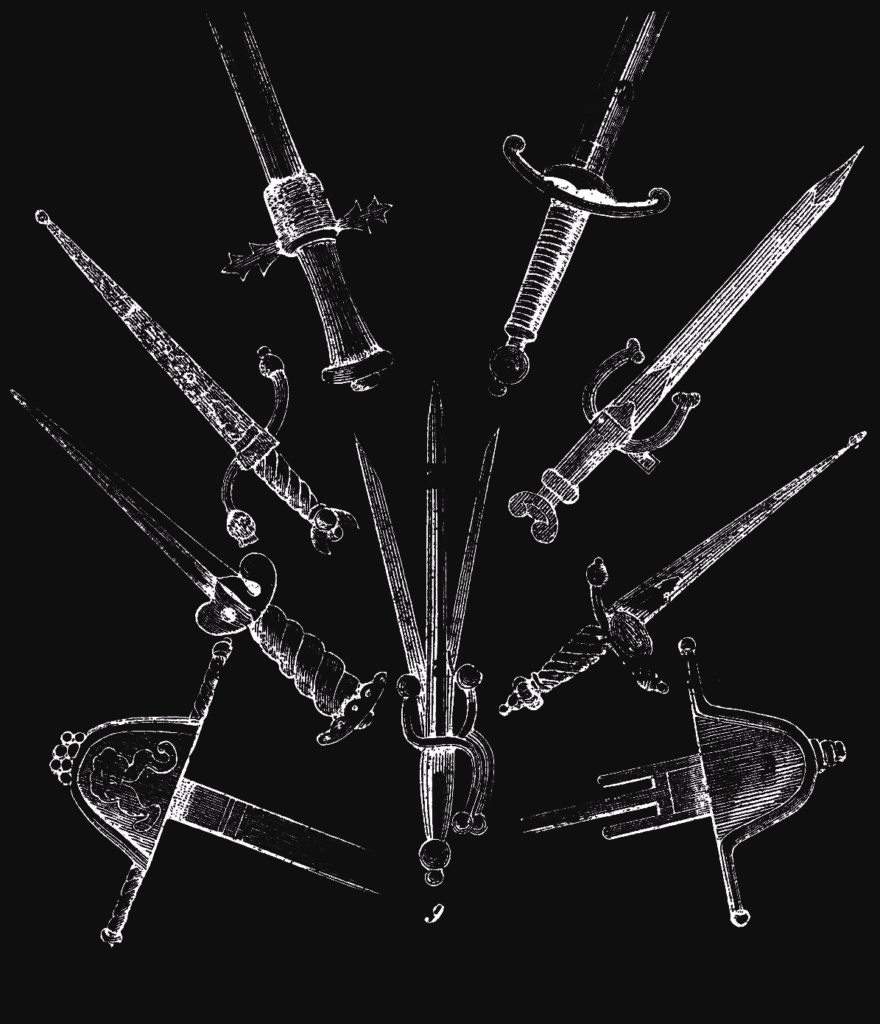⚠ – Content Warning: sexual assault, gendered violence, torture

The beheading of the Assyrian general Holofernes at the hands of Judith, a Jewish widow, and Abra, her maid, was a popular theme in art of the seventeenth century.
Among those who painted the subject was Florentine painter Artemisia Gentileschi, who famously depicted the beheading of Holofernes with unusually grisly physicality: Judith grips Holofernes by his hair and saws a sword through his throat with visible effort as blood sprays from the wound and his eyes roll back in his head. Her clenched fist is at the center of the composition. Gentileschi draws stylistic influence from Caravaggio in her use of stark chiaroscuro, but unlike Caravaggio, whose Judith is slender and delicate and whose Abra only stands by watching, she emphasizes the laborious effort exerted by the two women, their sleeves rolled up for the task, working as accomplices in a deed that clearly requires considerable physical strength. The painting’s brutality provoked fear and revulsion; despite having been commissioned by a Medici duke (due to the popularity of the subject matter), it was initially rejected, refused a spot for display, and Gentileschi was refused payment until her friend Galileo Galilee intervened. It has continued to provoke strong reactions, and was banished to obscurity by a Medici duchess in the late 18th century. Even when it received attention, Gentileschi herself was sometimes erased: in 1827, it was sold as a work of Caravaggio.
Artemisia Gentileschi was only about twenty years old when she first painted Judith Slaying Holofernes, and some scholars have argued that the painting is a covert self-portrait, representing herself as Judith. Holofernes, then, represents Agostino Tassi, her tutor, a close friend of her father, and the man who raped her only three years earlier, when she was seventeen. Abra’s active collaboration in the murder noticeably contrasts with the female chaperone who colluded with Tassi to help him corner Artemisia alone. Artemisia’s father did not seek legal recourse until Tassi refused to marry her as social custom would have required.
During the seven-month trial, she was tortured with thumbscrews to ensure she would not lie.
Tassi was not tortured.
She testified: “…When I saw myself free, I went to the table drawer and took a knife and moved toward Agostino, saying, ‘I’d like to kill you with this knife because you have dishonored me.’”
In the painting, Judith wears a bracelet depicting Artemis, the painter’s namesake, and the goddess of both chastity and the hunt. Indeed, feminist reclamation has often made Judith into an icon of insurrection against patriarchy. We follow in this tradition, but we choose as our own namesake not the goddess, Artemis, nor the legendary figure, nor even the painter—for as anarchists, we look to neither gods nor goddesses nor heroes—
Instead, we choose the knife.
Signed,
Judith’s Dagger
